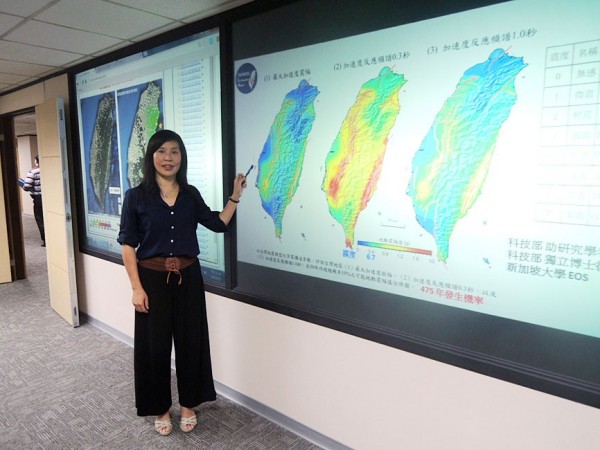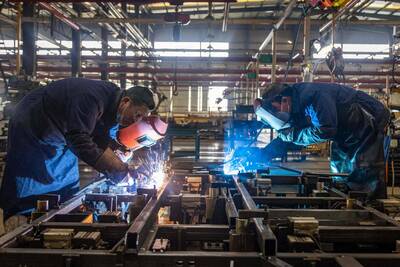《TAIPEI TIMES 焦點》Earthquake researchers mark 10 years of center

Director of the Taiwan Earthquake Research Center Ma Kuo-fong points to a map of Taiwan while introducing the center’s new earthquake early-warning system yesterday at the Ministry of Science and Technology in Taipei. Photo: Tang Chia-ling, Taipei Times
ADVANCED: The center’s earthquake early-warning program detects the primary waves of an earthquake, which travel faster than destructive secondary waves
By Chen Wei-han / Staff reporter
The Taiwan Earthquake Research Center yesterday announced the research results of an earthquake early-warning system, a Taiwan earthquake model and a real-time monitoring system to mark the center’s 10th anniversary.
Via its earthquake research and education programs, the center has enabled a deeper understanding of an earthquake’s mechanism and raised awareness about risks, center director Ma Kuo-fong (馬國鳳) said.
The center’s earthquake early-warning program has installed about 600 seismometers nationwide that are able to analyze and predict an earthquake’s epicenter, magnitude, the direction it is spreading and its intensity at differet locations within a few seconds, National Taiwan University professor Wu Yih-min (吳逸民) said.
The system detects the primary, non-destructive waves of an earthquake which travel faster than the destructive secondary waves, and issues an advanced warning seconds before the arrival of the destructive wave to minimize damage, Wu said.
The system is the first of its kind that is able to provide a real-time shaking map, which might be integrated into the Central Weather Bureau’s forecast system, he said.
The low-cost seismometers Wu’s team developed have been installed in earthquake-prone areas in India, China, South Korea, Indonesia, Vietnam, New Zealand and the Solomon Islands, and provide those nations with an inexpensive early-warning solution, he said.
The Taiwan Earthquake Model the center constructed allows researchers to understand earthquake behaviors and calculate the occurrence probabilities of potential earthquakes across the nation, Ma said.
According to the model, eastern Taiwan has the highest probability — about 30 percent — of being struck by a magnitude 7-or-higher earthquake in the next 30 years due to the activity of the Longitudinal Valley fault stretching between Hualien and Taitung counties, while the southwest has the highest frequency of earthquakes, and has about a 60 percent of chance of being hit by a magnitude 6.5 earthquake, due to the large number of active faults in the region, Ma said.
The center plans to construct a predictive model that would combine regional geological analysis with an assessment of the basin depth amplification of an earthquake to provide government officials and construction companies with a risk assessment tool, she said.
The real-time earthquake monitoring system can analyze the focal mechanism of an earthquake — the orientation of the fault plane and types of fault involved in an earthquake — within two minutes, Academia Sinica researcher Lee Shiann-jong (李憲忠) said, adding that the system can detect the dislocation of faults to see whether the seafloor is raised, which could be used to forecast if a tsunami is imminent.
新聞來源:TAIPEI TIMES



















